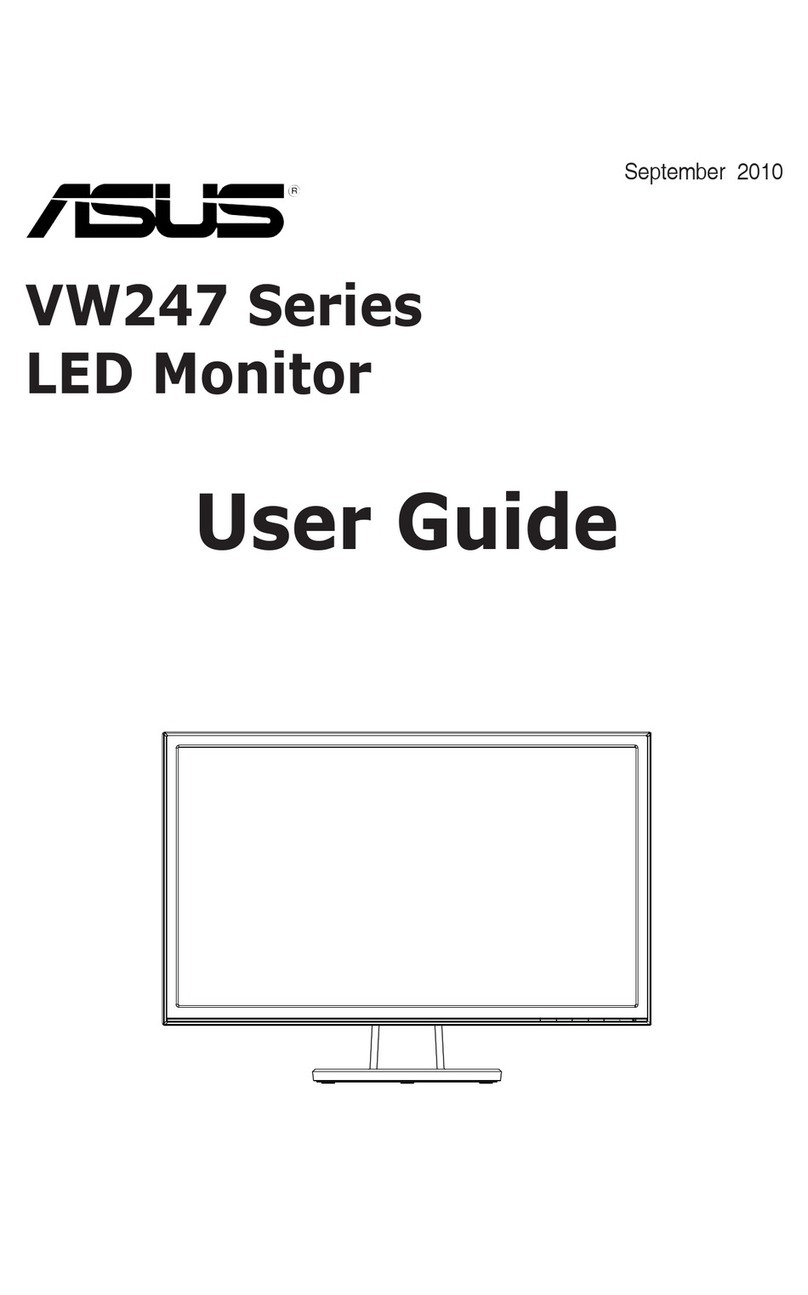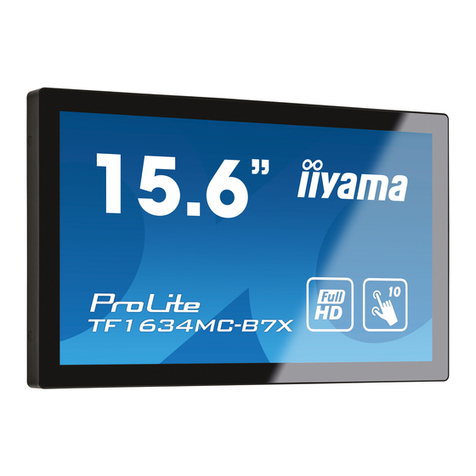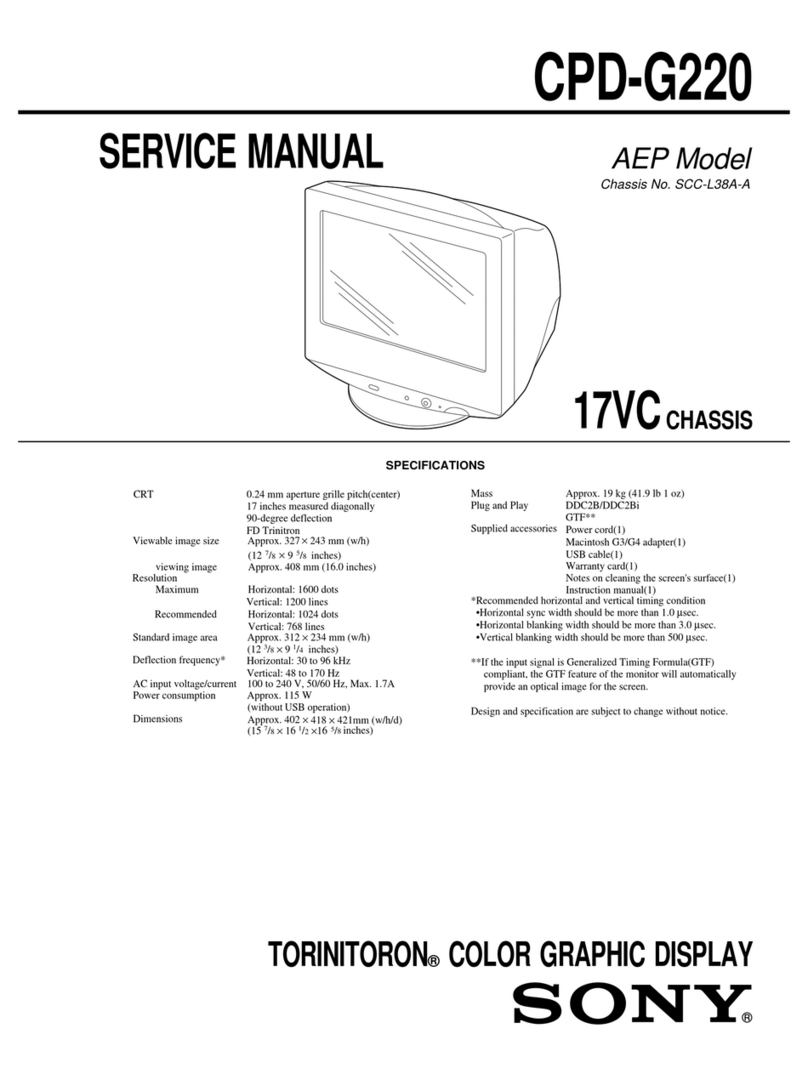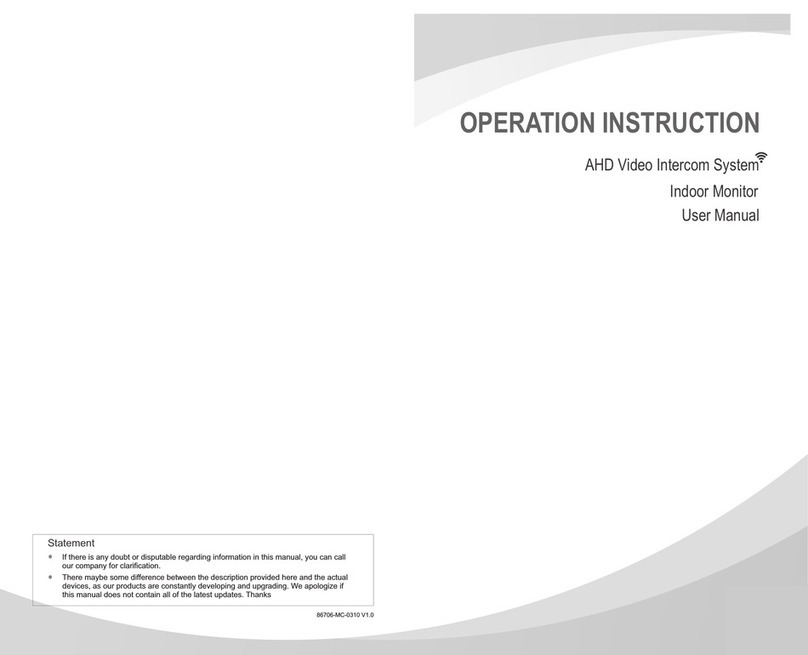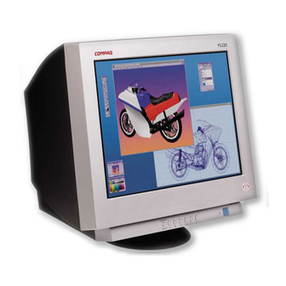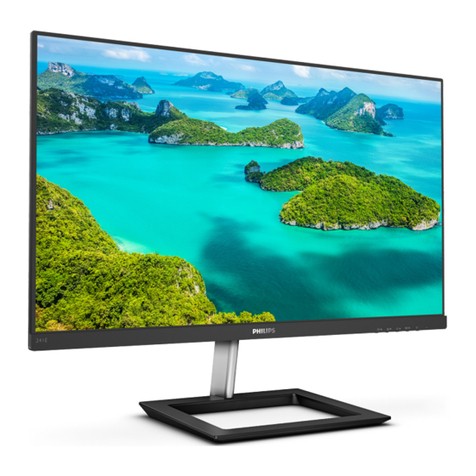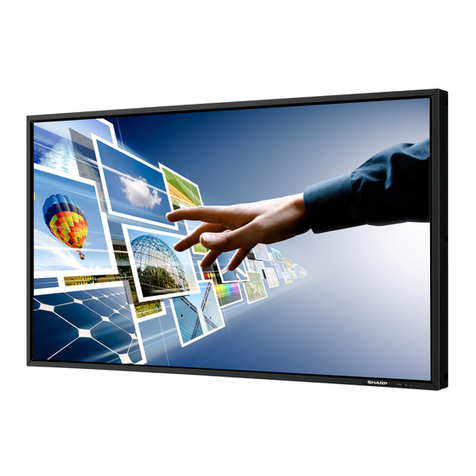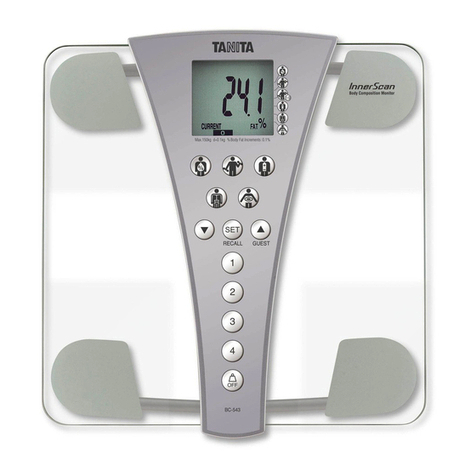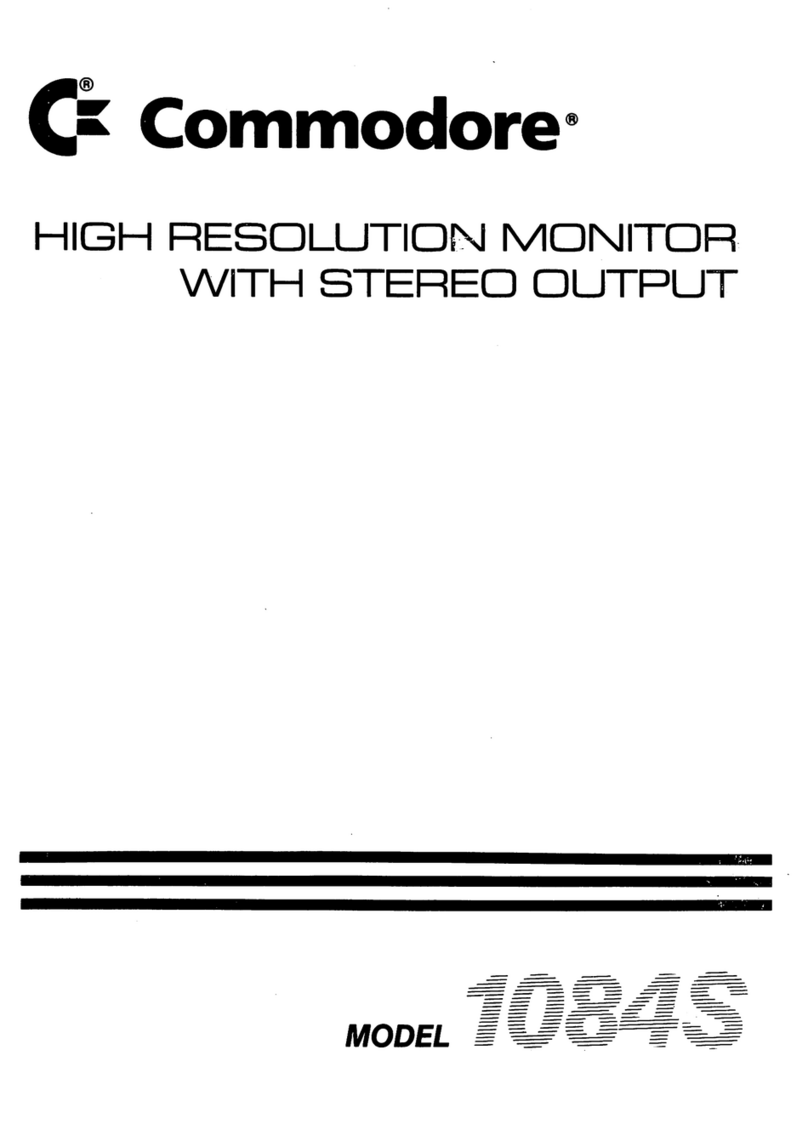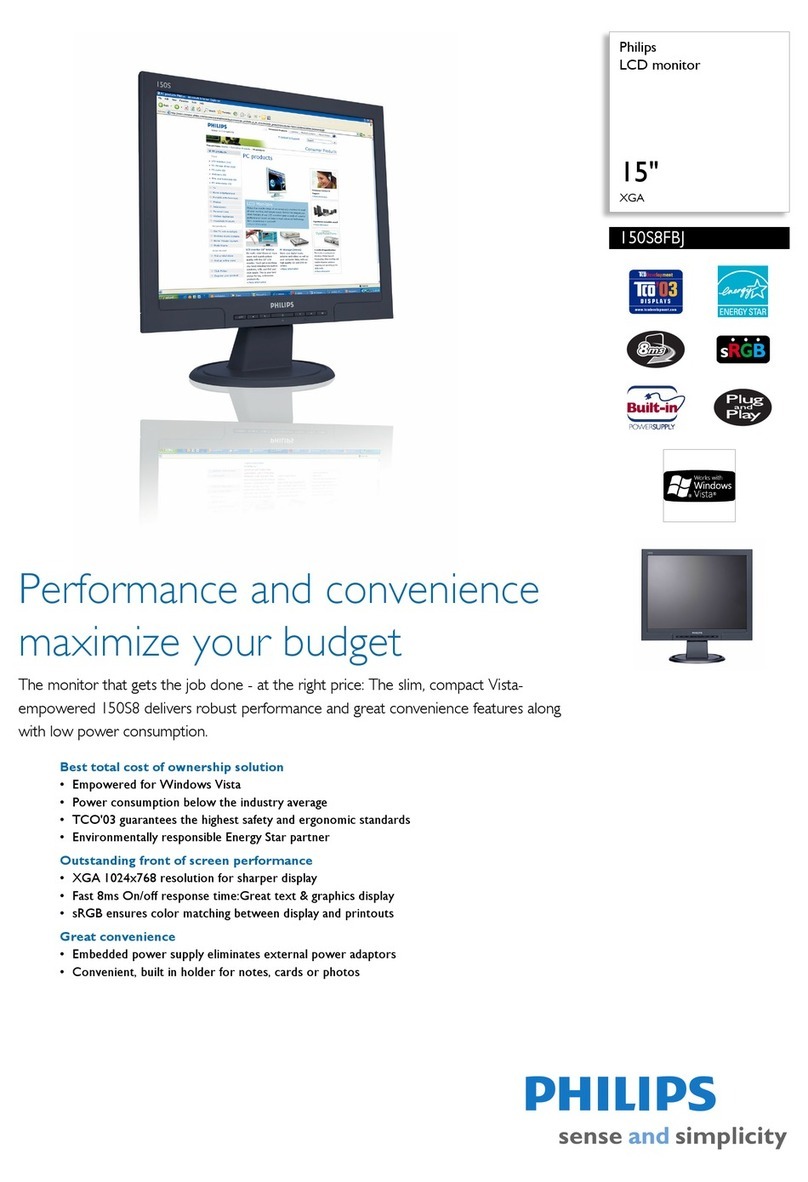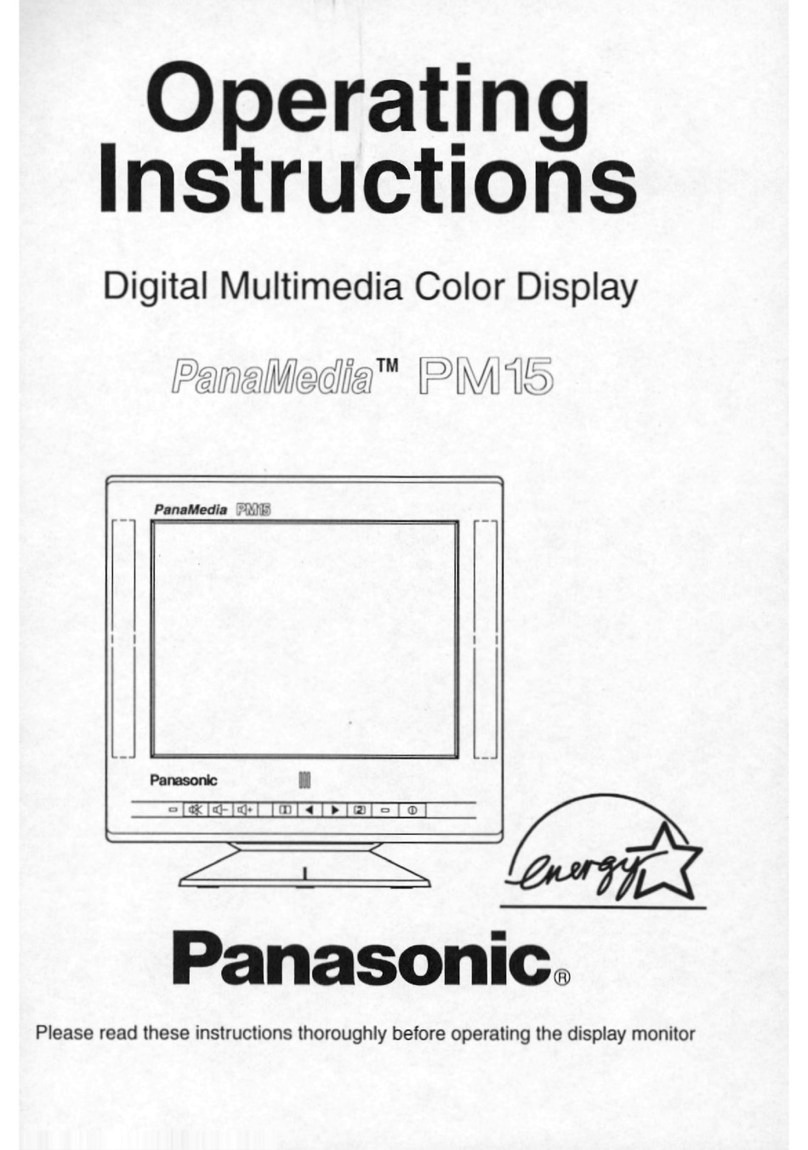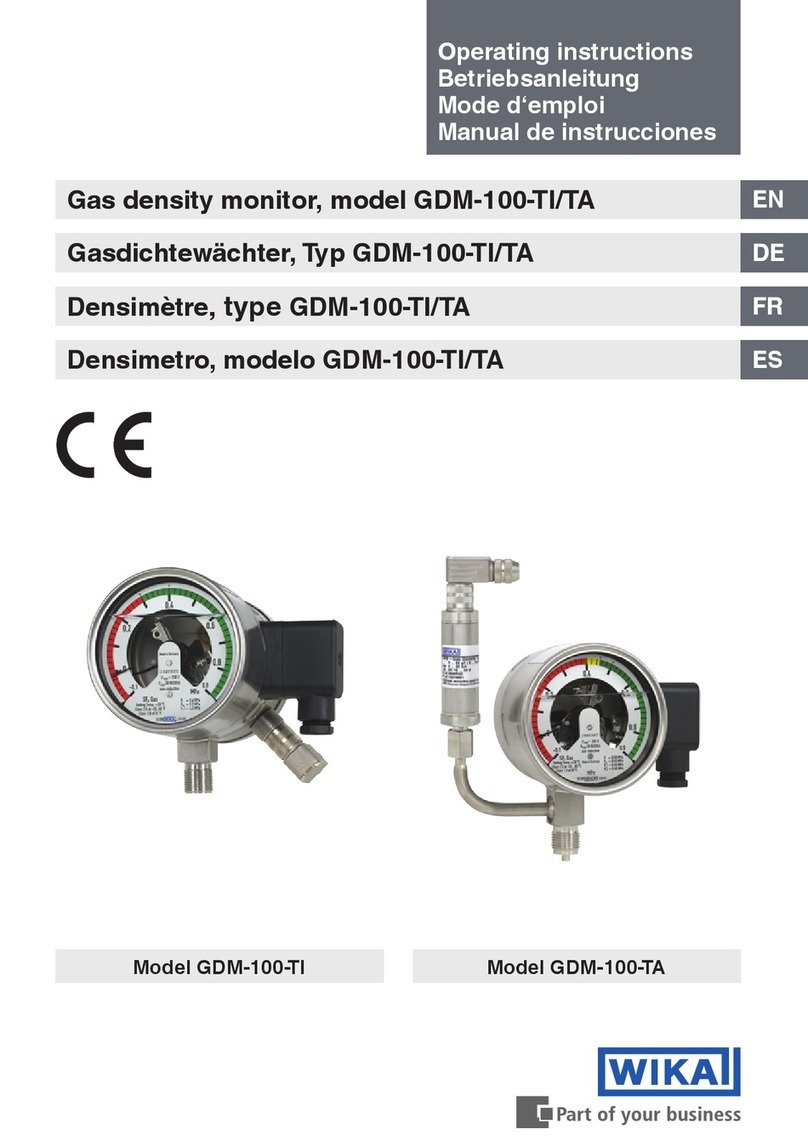Adafruit SSD1306 User manual

Monochrome OLED Breakouts
Created by Ladyada
Last updated on 2014-03-05 08:15:08 AM EST

2
3
5
5
5
5
7
8
11
11
11
11
12
14
14
16
16
18
18
20
21
22
Guide Contents
Guide Contents
Overview
Power Requirements
OLED Power Requirements
5V- ready 128x64 and 128x32 OLEDs
0.96" 128x64 OLED
Arduino Library & Examples
Create Bitmaps
Wiring 128x64 OLEDs
Solder Header
I2C or SPI
Using with I2C
Using with SPI
Wiring 128x32 SPI OLED display
128x32 SPI OLED
Wiring 128x32 I2C Display
128x32 I2C OLED
Wiring OLD 0.96" 128x64 OLED
128x64 Version 1.0 OLED
Downloads
Buy OLED Displays
Forums
© Adafruit
Industries http://learn.adafruit.com/monochrome-oled-breakouts Page 2 of 22

Overview
This is a quick tutorial for our 128x64 and 128x32 pixel monochrome OLED displays. These
displays are small, only about 1" diagonal, but very readable due to the high contrast of an
OLED display. Each OLED display is made of 128x64 or 128x32 individual white OLEDs, each one
is turned on or off by the controller chip. Because the display makes its own light, no backlight
is required. This reduces the power required to run the OLED and is why the display has such
high contrast; we really like this miniature display for its crispness!
© Adafruit
Industries http://learn.adafruit.com/monochrome-oled-breakouts Page 3 of 22

The driver chip, SSD1306 can communicate in multiple ways including I2C, SPI and 8-bit
parallel. However, only the 128x64 display has all these interfaces available. For the 128x32
OLED, only SPI is available. Frankly, we prefer SPI since its the most flexible and uses a small
number of I/O pins so our example code and wiring diagram will use that.
© Adafruit
Industries http://learn.adafruit.com/monochrome-oled-breakouts Page 4 of 22

Power Requirements
OLED Power Requirements
The OLED and driver require a 3.3V power supply and 3.3V logic levels for communication. The
power requirements depend a little on how much of the display is lit but on average the display
uses about 20mA from the 3.3V supply. Built into the OLED driver is a simple switch-cap charge
pump that turns 3.3v-5v into a high voltage drive for the OLEDs. You can run the entire display
off of one 3.3V supply or use 3.3V for the chip power and up to 4.5V for the OLED charge pump
or 3.3V for the chip power and a 7-9V supply directly into the OLED high voltage pin.
5V- ready 128x64 and 128x32 OLEDs
Unless you have the older v1 128x64 OLED, you can rest assured that your OLED is 5V ready.
All 1.3" 128x64 and the small 128x32 SPI and I2C are 5V ready, if you have a v2 0.96" 128x64
OLED with the 5V ready mark on the front, it's also 5V safe. If you have an older 0.96" OLED
(see below) you'll need to take extra care when wiring it to a 5V micontroller. The OLED is
designed to be 5V compatible so you can power it with 3-5V and the onboard regulator will take
care of the rest.
All OLEDs are safe to use with 3.3V logic and power.
Simply connect GND to ground, and Vin to a 3 to 5V power supply. There will be a 3.3V output
on the 3Vo pin in case you want a regulated 3.3V supply for something else.
0.96" 128x64 OLED
The older 0.96" 128x64 OLED is a little more complex to get running as it is not 5V compatible
by default, so you have to provide it with 3.3V power.
© Adafruit
Industries http://learn.adafruit.com/monochrome-oled-breakouts Page 5 of 22

VDD is the 3.3V logic power. This must be 3 or 3.3V
VBAT is the input to the charge pump. If you use the charge pump, this must be 3.3V to
4.2V
VCC is the high voltage OLED pin. If you're using the internal charge pump, this must be left
unconnected. If you're not using the charge pump, connect this to a 7-9V DC power supply.
For most users, we suggest connecting VDD and VBAT together to 3.3V and then
leaving VCC unconnected.
© Adafruit
Industries http://learn.adafruit.com/monochrome-oled-breakouts Page 6 of 22

Arduino Library & Examples
For all of the different kinds of small OLED monochrome displays, you'll need to install the
Arduino libraries. The code we have is for any kind of Arduino, if you're using a different
microcontroller, the code is pretty simple to adapt, the interface we use is basic bit-twiddling
SPI.
To download the Arduino library, visit the Adafruit SSD1306 library repository on
GitHub (http://adafru.it/aHq) . Click the DOWNLOAD button near the upper left, extract the
archive and then rename the uncompressed folder to Adafruit_SSD1306. Confirm that this
folder contains the files Adafruit_SSD1306.cpp and Adafruit_SSD1306.h and the
examples folder.
Place the Adafruit_SSD1306 folder inside your Arduino /libraries folder. You may need to
create this folder if it does not yet exist. In Windows, this would be (home folder)\My
Documents\Arduino\libraries and for Mac or Linux is (home
folder)/Documents/Arduino/libraries. We also have a tutorial on library
installation (http://adafru.it/aYG).
You will need to do the same for the Adafurit_GFX library available here (http://adafru.it/aJa)
After installing the Adafruit_SSD1306 and Adafruit_GFX library, restart the Arduino IDE. You
should now be able to access the sample code by navigating through menus in this order:
File®® Sketchbook®® Libraries®® Adafruit_SSD1306®® SSD1306...
After you've finished wiring the display as indicated on the following pages, load the example
sketch to demonstrate the capabilities of the library and display.
The OLED SSD1306 driver is based on the Adafruit GFX library which provides all the underlying
graphics functions such as drawing pixels, lines, circles, etc. For more details about what you
can do with the OLED check out the GFX library tutorial (http://adafru.it/aPx)
The library cannot determine the screen size via software.
The library cannot determine the screen size via software. You have to specify it in
You have to specify it in
the header file.
the header file. Go into the library folder and open the file Adafruit_SSD1306.h.
Go into the library folder and open the file Adafruit_SSD1306.h.
Toward the top you'll see a section of comments that tell how how to edit the file for
Toward the top you'll see a section of comments that tell how how to edit the file for
different kinds of display.
different kinds of display.
© Adafruit
Industries http://learn.adafruit.com/monochrome-oled-breakouts Page 7 of 22

Create Bitmaps
You can create bitmaps to display easily with the LCD assistant software (http://adafru.it/aPs).
First make your image using any kind of graphics software such as photoshop or Paint and save
as a Monochrome Bitmap (bmp)
© Adafruit
Industries http://learn.adafruit.com/monochrome-oled-breakouts Page 8 of 22

Select the following options (You might also want to try Horizontal if Vertical is not coming
out right)
and import your monochrome bitmap image. Save the output to a cpp file
© Adafruit
Industries http://learn.adafruit.com/monochrome-oled-breakouts Page 9 of 22

You can use the output directly with our example code
© Adafruit
Industries http://learn.adafruit.com/monochrome-oled-breakouts Page 10 of 22

Wiring 128x64 OLEDs
Solder Header
Before you start wiring, a strip of header must be soldered onto the OLED. It is not possible to
"press-fit" the header, it must be attached!
Start by placing an 8-pin piece of header
with the long ends down into a
breadboard for stability
Place the OLED on top so all the short
ends of the header stick thru the header
pads
Finish by soldering each of the 8 pins to
the 8 pads!
I2C or SPI
The nice thing about the 128x64 OLEDs is that they can be used with I2C (+ a reset line) or SPI.
SPI is generally faster than I2C but uses more pins. It's also easier for some microcontrollers to
use SPI. Anyways, you can use either one with this display
Using with I2C
© Adafruit
Industries http://learn.adafruit.com/monochrome-oled-breakouts Page 11 of 22

The display can be used with any I2C microcontroller. Because the I2C interface is for 'writing' to
the display only, you'll still have to buffer the entire 512 byte frame in the microcontroller RAM -
you can't read data from the OLED (even though I2C is a bidirectional protocol).
To start, you'll need to solder the two jumpers on the back of the OLED. Both must be
soldered 'closed' for I2C to work!
Finally, connect the pins to your Arduino
GND goes to ground
Vin goes to 5V
Data to I2C SDA (on the Uno, this is A4 on the Mega it is 20 and on the Leonardo digital 2)
Clk to I2C SCL (on the Uno, this is A5 on the Mega it is 21 and on the Leonardo digital 3)
RST to digital 4 (you can change this pin in the code, later)
This matches the example code we have written. Once you get this working, you can try a
different Reset pin (you can't change the SCA and SCL pins).
Finally you can run the
File®® Sketchbook®® Libraries®® Adafruit_SSD1306®® SSD1306_128x64_i2c example
Using with SPI
The breakouts are ready for SPI by default, but if you used them for I2C at some point, you'll
need to remove the solder jumpers. Use wick or a solder sucker to make sure both are clear!
© Adafruit
Industries http://learn.adafruit.com/monochrome-oled-breakouts Page 12 of 22

Finally, connect the pins to your Arduino -
GND goes to ground
Vin goes to 5V
DATA to digital 9
CLK to digital 10
D/C to digital 11
RST to digital 13
CS to digital 12
(Note: If using the display with other SPI devices, D/C, CLK and DAT may be shared, but CS
must be unique for each device.)
This matches the example code we have written. Once you get this working, you can try
another set of pins.
Finally you can run the
File®® Sketchbook®® Libraries®® Adafruit_SSD1306®® SSD1306_128x64_spi example
© Adafruit
Industries http://learn.adafruit.com/monochrome-oled-breakouts Page 13 of 22

Wiring 128x32 SPI OLED display
128x32 SPI OLED
The 128x32 SPI OLED is very easy to get up and running because it has built in level shifting.
First up, take a piece of 0.1" header 8 pins long.
Plug the header long end down into a breadboard and place the OLED on top. Solder the short
pins into the OLED PCB.
Finally, connect the pins to your Arduino - GND goes to ground, Vin goes to 5V, DATA to
digital 9, CLK to digital 10, D/C to digital 11, RST to digital 13 and finally CS to digital 12.
(Note: If using the display with other SPI devices, D/C, CLK and DAT may be shared, but CS
© Adafruit
Industries http://learn.adafruit.com/monochrome-oled-breakouts Page 14 of 22

must be unique for each device.)
This matches the example code we have written. Once you get this working, you can try
another set of pins.
Finally you can run
the File®® Sketchboo k®® Libraries®® Adafruit_SSD1306®® SSD1306_128x32_SPI example
If you're using the 128x32 OLED, be sure to uncomment the "#define
If you're using the 128x32 OLED, be sure to uncomment the "#define
SSD1306_128_32" in the top of Adafruit_SSD1306.h to change the buffer size
SSD1306_128_32" in the top of Adafruit_SSD1306.h to change the buffer size
© Adafruit
Industries http://learn.adafruit.com/monochrome-oled-breakouts Page 15 of 22

Wiring 128x32 I2C Display
128x32 I2C OLED
The 128x32 I2C OLED is very easy to get up and running because it has built in level shifting and
regulator. First up, take a piece of 0.1" header 6 pins long.
Plug the header long end down into a
breadboard
Place the OLED on top
Solder the short pins into the OLED PCB.
© Adafruit
Industries http://learn.adafruit.com/monochrome-oled-breakouts Page 16 of 22

Finally, connect the pins to your Arduino
GND goes to ground
Vin goes to 5V
SDA to I2C Data (on the Uno, this is A4 on the Mega it is 20 and on the Leonardo digital 2)
SCL to I2C Clock(on the Uno, this is A5 on the Mega it is 21 and on the Leonardo digital 3)
RST to digital 4 (you can change this pin in the code, later)
This matches the example code we have written. Once you get this working, you can change
the RST pin. You cannot change the I2C pins, those are 'fixed' in hardware
Finally you can run
the File®® Sketchboo k®® Libraries®® Adafruit_SSD1306®® SSD1306_128x32_i2c example
© Adafruit
Industries http://learn.adafruit.com/monochrome-oled-breakouts Page 17 of 22

Wiring OLD 0.96" 128x64 OLED
128x64 Version 1.0 OLED
The version 1 128x64 OLED runs at 3.3V and does not have a built in level shifter so you'll need
to use a level shifting chip to use with a 5V microcontroller. The following will assume that is the
case. If you're running a 3.3V microcontroller system, you can skip the level shifter.
We'll assume you want to use this in a
breadboard, take a piece of 0.1" header
10 pins long.
Place the header in a breadboard and
then place the left hand side of the OLED
on top.
And solder the pins
This wiring diagram is only for the older 0.96" OLED that comes with a level shifter
This wiring diagram is only for the older 0.96" OLED that comes with a level shifter
chip. If you did not get a level shifter chip, you have a V2.0 so please check out the
chip. If you did not get a level shifter chip, you have a V2.0 so please check out the
other wiring tutorial!
other wiring tutorial!
© Adafruit
Industries http://learn.adafruit.com/monochrome-oled-breakouts Page 18 of 22

We'll be using the internal charge pump
so connect VDD and VBAT together
(they will connect to 3.3V). GND goes to
ground.
Place a CD4050 level shifter chip so pin
one is at the top.
Connect pin 10 to D/C pin 12 to CLK (SPI
clock) and pin 15 to DAT (SPI data).
Connect pin 2 to RES (reset) and pin 4
to CS (chip select). Pin 1 goes to 3.3V
and pin 8 to ground.
(Note: If using the display with other
SPI devices, D/C, CLK and DAT may be
shared, but CS must be unique for each
device.)
You can connect the inputs of the level
shifter to any pins you want but in this
case we connected digital I/O 13 to pin 3
of the level shifter, 12 to pin 5, 11 to pin
9, 10 to pin 11 and 9 to pin 14. This
matches the example code we have
written. Once you get this working, you
can try another set of pins.
© Adafruit
Industries http://learn.adafruit.com/monochrome-oled-breakouts Page 19 of 22

Downloads
You can download our SSD1306 OLED display Arduino library from
github (http://adafru.it/aHq) which comes with example code. The library can print text,
bitmaps, pixels, rectangles, circles and lines. It uses 1K of RAM since it needs to buffer the
entire display but its very fast! The code is simple to adapt to any other microcontroller. You'll
also have to install the Adafruit GFX graphics core library at this github
repo (http://adafru.it/aJa) and install it after you've gotten the OLED driver library.
UG-2864HSWEG01 (http://adafru.it/aJI) Datasheet
UG-2864HSWEG01 (http://adafru.it/aJJ) User Guide
SSD1306 (http://adafru.it/aJK) Datasheet
GitHub repo for 128x32 SPI display PCB (http://adafru.it/aJL)
GitHub repo for 128x64 0.96" display PCB (http://adafru.it/aJM)
© Adafruit
Industries http://learn.adafruit.com/monochrome-oled-breakouts Page 20 of 22
Table of contents

